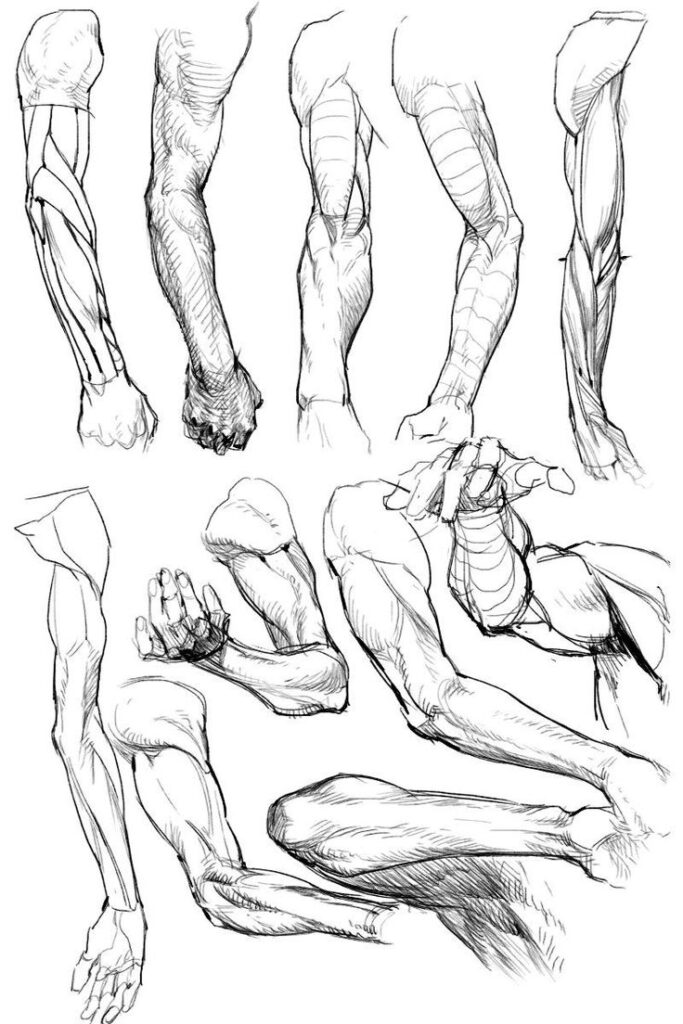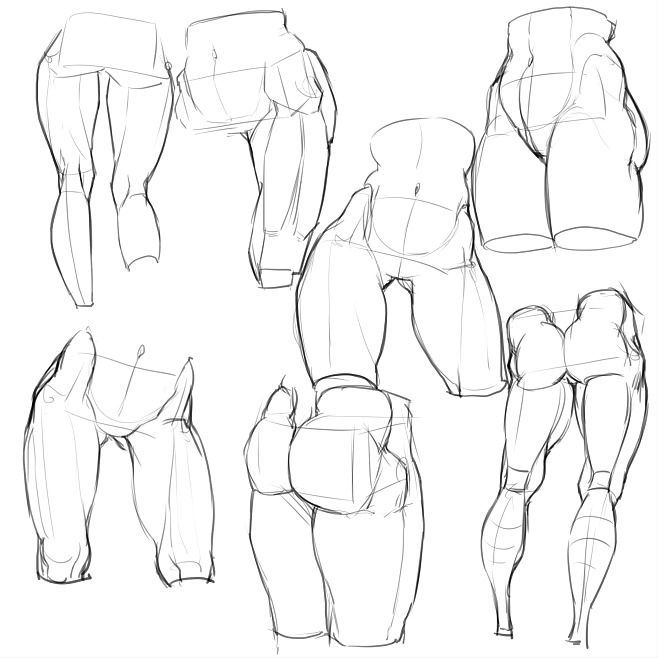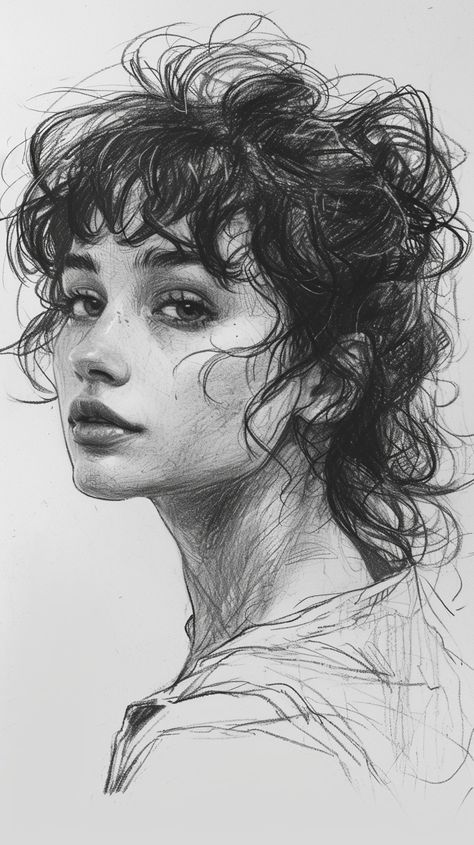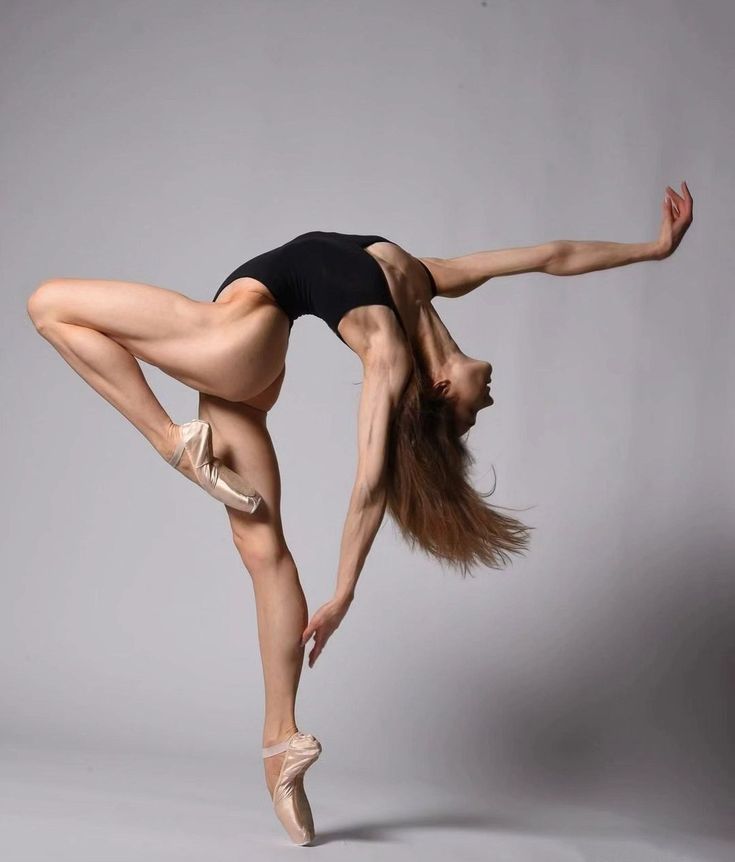Drawing the human body is both an art and a science, requiring a balance of creativity and precise observation. Understanding the fundamentals of human anatomy allows artists to capture accurate proportions and dynamic poses. With practice and study, individuals can transform their skills, leading to more realistic and expressive artworks.
Artists often start by breaking down the body into manageable parts, focusing on limbs, extremities, and facial features. Learning how to depict these elements enhances their overall drawing capabilities. Mastering aspects such as muscle structure and joint movement contributes significantly to lifelike representations.
The journey of body drawing involves continuous refinement and exploration. Engaging in different styles and techniques fosters creativity, making the process enjoyable and rewarding. With dedication and effort, anyone can develop their ability to draw the human form.
Key Takeaways
- Understanding anatomy improves drawing accuracy and proportion.
- Practicing body parts enhances overall artistic skills.
- Exploring diverse techniques fosters creativity in art.
Understanding Human Anatomy for Drawing
A foundational grasp of human anatomy enhances drawing accuracy and realism. It involves knowledge of skeletal structures, muscle groups, and surface anatomy to depict the human form effectively.
Skeletal System Basics
The skeletal system is composed of 206 bones in adults, providing structure and support. Key components include the spine, which consists of vertebrae that protect the spinal cord, and the pelvis, which supports the weight of the upper body and connects the spine to the legs.


Important long bones include the humerus in the upper arm, the femur in the thigh, and the tibia and fibula in the lower leg. Understanding bone proportions and joint locations is crucial for creating an anatomically correct figure. Artists need to consider how bones interface at joints, such as the knee, which involves the femur, tibia, and patella.
Muscle Structure and Groups
Muscle structure consists of fibers organized in bundles, enabling contraction and movement. Muscles are categorized into groups based on location and function, such as agonist and antagonist muscles.
For instance, primary muscle groups include the biceps and triceps in the arms, which work together for flexion and extension. In the legs, the quadriceps and hamstrings govern movement in the knee. Male and female bodies may exhibit different muscle mass and distribution, impacting proportions in drawings.
Surface Anatomy
Surface anatomy refers to the external features of the body, encompassing skin, contours, and landmarks. Recognizing areas like the clavicle, shoulder, and ribs is vital for accurate representation.


Identifying body types can reveal variations in proportions, contributing to more realistic depictions. The female body typically has a wider pelvis and rounded contours, while the male body may display broader shoulders and a more angular frame. Artists should observe how muscle tension alters the surface appearance during different poses, enhancing the dynamism and realism of their drawings.
Fundamentals of Body Drawing
Body drawing requires a foundational understanding of shapes, proportions, and dynamic movement. Mastering these elements is essential for accurate and expressive figure representation.
Basic Shapes and Proportions
Successful body drawing starts with identifying basic shapes. The human figure can be broken down into simple forms such as:
- Oval: Head and limbs.
- Trapezium: Torso.
- Cylinders: Arms and legs.
Using these shapes helps in establishing proportions. The average adult is approximately 7.5 to 8 heads tall. Artists often use guidelines to map out the height and width at each stage of development. Key proportions include:
- Shoulders are usually 2-3 heads wide.
- The elbows align with the waist.
- Knees are roughly half the total height.
These foundational shapes allow for a more accurate portrayal of the human figure.
Dynamic Figure Drawing
Dynamic figure drawing captures movement and expression. This technique emphasizes the fluidity of the human form. Artists benefit from studying both static and dynamic poses.
To achieve dynamic results, consider the following techniques:
- Lines of Action: Establish a central line that represents the primary movement.
- Foreshortening: Utilize perspective to create an illusion of depth; for instance, limbs closer to the viewer should appear larger.
- Gesture Drawing: Quickly sketch poses to enhance fluidity and spontaneity.
Practice with varied angles and poses to reinforce understanding of motion. Building these skills enables the artist to create more lifelike and engaging figures.
Exploring Limbs and Extremities


Understanding the structure and proportions of limbs and extremities is crucial for effective body drawing. This section examines the specific elements of arms and hands, along with legs and feet, highlighting key details that aid in practice.
Arms and Hands
When drawing arms, attention should be given to their proportions. The upper arm should be roughly equal in length to the forearm. The elbow is another critical point that adds life to the drawing.


In hands, artists should focus on the distinct shapes of fingers. Gestures and positions significantly influence the appearance of the hand. Remember, hands have a complex structure, including the metacarpals and phalanges, which requires practice to represent accurately.
Utilizing references, such as photographs or live models, can enhance understanding. Drawing hands in various poses will aid in mastering their portrayal.
Legs and Feet


Legs are primarily composed of the thigh, knee, and calf. Each segment has its proportionate length, with the thigh being the longest. The knee acts as a joint, providing flexibility.
Feet require particular attention to detail as well. They serve as the foundation for balance. Artists should understand the structure of the arch and toes.


Using a reference grid can help maintain proportions when sketching feet. Observing how feet relate to the body’s weight distribution aids in creating realistic poses. Practicing with various angles will improve overall leg and foot representation.
Facial Features and Hair


This section focuses on the essential elements involved in drawing facial features and hair, emphasizing proportions and detail. Understanding these components is crucial for creating realistic and expressive representations.
Drawing the Face
When drawing the face, it is important to understand the correct proportions. The head is typically divided into sections to help with placement:
- The eyes sit approximately halfway down the head.
- There is roughly one eye’s width between the eyes.
- The bottom of the nose is located about halfway between the eyes and the chin.
- The mouth sits a third of the way down between the nose and chin.
Attention should be paid to distinct features such as the shape of the eyes, nose, and lips. Individual differences significantly contribute to character. Emphasizing these unique aspects can bring a drawing to life.
Hair and Hairstyles
When illustrating hair, consider its flow, texture, and volume. Hair should be drawn in clumps rather than individual strands to create a natural look.
- Use varied line weights to convey depth: thicker lines can suggest shadow, while thinner lines highlight texture.
- Different hairstyles require different techniques; straight hair can be drawn with smooth, flowing lines, while curly hair may require more zigzag patterns for realism.
Pay attention to the direction of the hair strands, as they usually follow the head’s curvature. A well-executed hairstyle complements the facial features, enhancing the overall character portrayal.
Practice and Refinement


Regular practice is crucial for improving body drawing skills. Technique enhancement and observational skills significantly contribute to an artist’s ability to depict the human form accurately. Focused exercises can lead to greater precision and creativity in drawings.
Technique Improvement through Practice
Consistent practice allows artists to refine their drawing techniques. Engaging in sketching sessions with diverse poses helps in developing a better understanding of anatomy and proportions. Artists should use a variety of reference materials, including anatomical books and online resources, to deepen their knowledge.
Creating quick sketches can boost speed and confidence. Utilizing gesture drawing—drawing the basic form in a short time—trains artists to capture the essence of movement and posture. This technique encourages fluidity and spontaneity, key elements in body drawing.
Observational Skill Enhancement
Observation is a vital component in mastering body drawing. Artists are encouraged to study real-life subjects or reference images closely. Noting details such as light, shadow, and texture aids in bringing depth to the drawing.
Practicing from life models or taking photos can enhance understanding of body dynamics. Artists should focus on varying angles and perspectives to fully capture the subject’s form. Maintaining a sketchbook for daily observations can train the eye and improve drawing accuracy.
Utilizing tools such as charcoal, pencils, or digital software enables experimentation with different styles and techniques, further aiding in skill enhancement.
Creative Applications in Drawing


Drawing the human body offers vast opportunities for creativity, from character and costume design to unique stylization techniques. These applications enable artists to communicate stories and emotions effectively while enhancing their skill set.
Character and Costume Design
In character design, understanding body anatomy is crucial. Artists use anatomical drawings to create relatable figures that convey personality traits. Gesture drawing plays a key role in capturing dynamic poses, making characters feel alive.
Costume design complements character development. Each outfit can reflect a character’s background, occupation, or emotional state. For instance, a warrior might wear rugged armor, while a scholar could sport scholarly robes. This integration of body and attire enhances storytelling.
Stylization and Abstracting Form
Stylization allows artists to deviate from strict anatomical accuracy. By abstracting form, they can emphasize specific features or create distinctive styles. For example, exaggerated proportions may convey humor or whimsy in illustrations.
This approach to drawing bodies can also serve various artistic movements. From impressionism to modern graphic novels, stylization connects artists with diverse audiences. It lets them challenge perceptions of reality while expressing individual artistic voices.
Conclusion


Drawing different parts of the body requires specific techniques that highlight anatomical structures. Mastery of these techniques allows artists to produce realistic representations.
Focusing on the upper body, artists can explore various poses and angles. Understanding the male physique involves recognizing muscular structures and proportions. This knowledge enhances the accuracy of body representations.
Key Techniques for Upper Body Drawing:
- Gesture Drawing: Captures the dynamic movement.
- Proportions: Maintain accurate ratios between different body parts.
- Shading: Adds depth and realism through light and shadow.
Artists should practice regularly to refine their skills. Utilizing references, such as photographs and anatomical models, aids in the learning process. Each drawing reinforces understanding of the human form.
Attention to detail will improve overall proficiency. By experimenting with different techniques, artists can find their unique style while effectively representing the upper body.
- 5.8Kshares
- Facebook0
- Pinterest5.8K
- Twitter0


